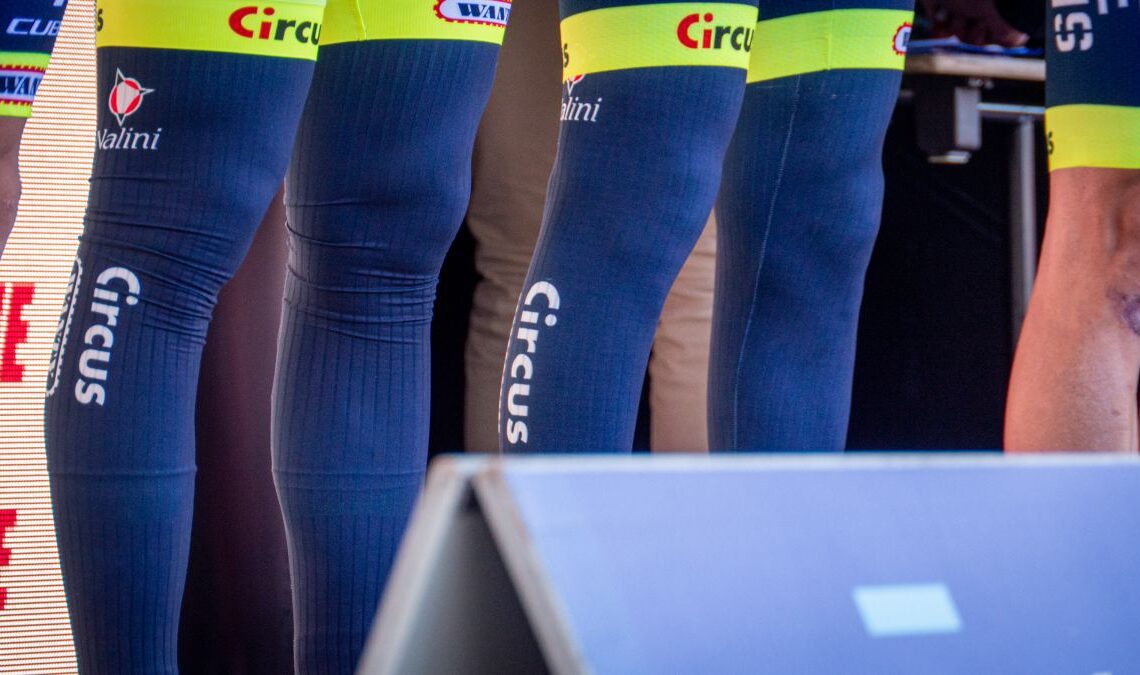With temperatures hovering merely a degree above freezing at the start of Sunday’s Kuurne-Brussel-Kuurne, leg warmers were a common sight. However, at the Intermarché-Circus-Wanty bus, some legs looked a little different to others.
Taco van der Hoorn, known for his attention to detail when it comes to equipment, and a couple of his teammates, were wearing leg warmers with aerodynamic strips running down their length.
Speaking to Cyclingnews at the team presentation, Van der Hoorn explained that it was a conscious choice.
“I made the suggestion to Nalini to make [them],” he admitted, referencing a visit he made to his team’s kit sponsor’s headquarters in Italy in December. “I will keep them on all race,” he continued, despite riders commonly removing them ahead of the often-more-important latter phases.
From the outside, it seems like something of a no-brainer. For the Spring Classics, where weather is often less than favourable, leg warmers are being used anyway, so the ability to optimise them with the same technology used in aero socks seems like an easy win.
Van der Hoorn’s leg warmers aren’t the first of their kind. British brand Lusso makes a pair, with a few aero kit specialists making them too, but exactly how much faster they are is unknown.
“I didn’t have time for testing,” explained the Dutchman, who at the time of writing, is in the breakaway at Kuurne for the second year in a row and racing into the final 100km as part of a six-man lead group.
Renowned cycling brand Silca claims its aero socks can save between three and eight watts over a normal pair, while aero specialists Rule 28 claims a more significant saving of up to 12 watts for theirs. With the greater coverage of leg warmers, it’s feasible to expect even bigger savings when applying the optimised fabrics to the entire leg.
However, their use poses a question surrounding the UCI’s sock height rule, which mandates that “socks and overshoes used in competition may not rise above the height defined by half the distance between the middle of the lateral malleolus and the middle of the fibula head.”
This rule was introduced in 2019 when it became apparent that optimised fabrics could be faster than bare skin, resulting in riders using almost knee-length aero socks to save watts.
“I need to cover my legs anyway,” was Van der Hoorn’s retort – accompanied by a wry smile – when asked if he’d considered the rule. “I would ride with normal ones, but now I ride with these.”
As for…
Click Here to Read the Full Original Article at CyclingNews RSS Feed…

